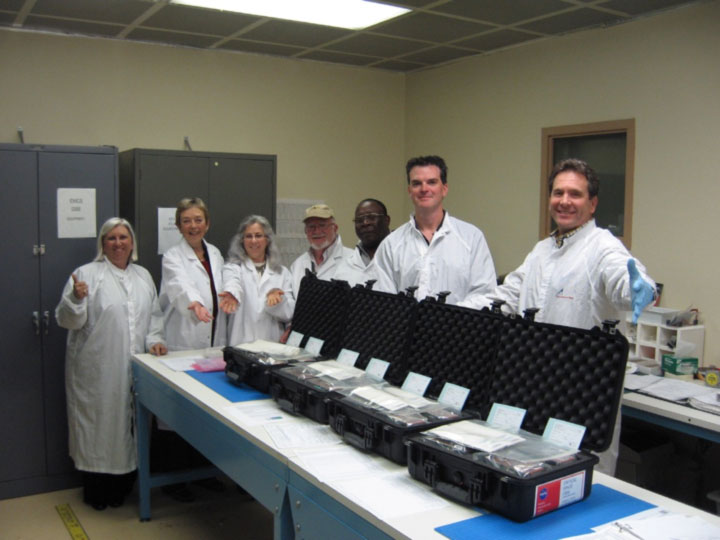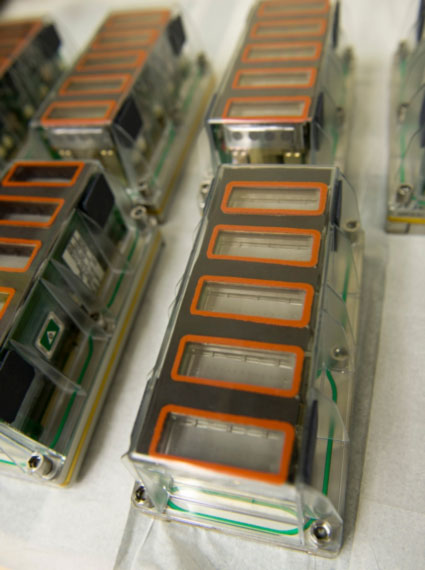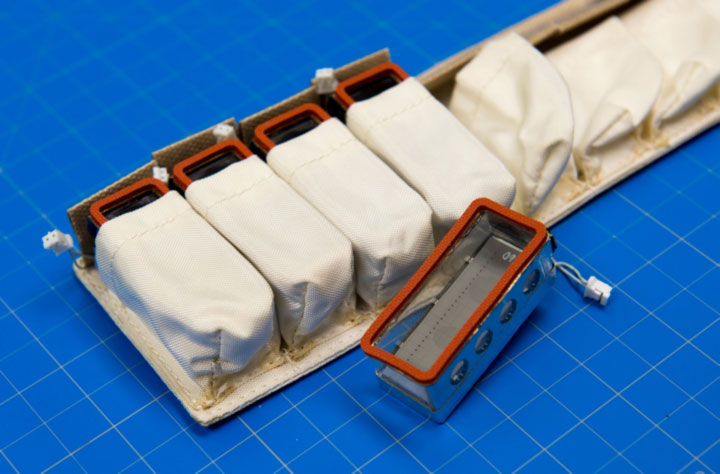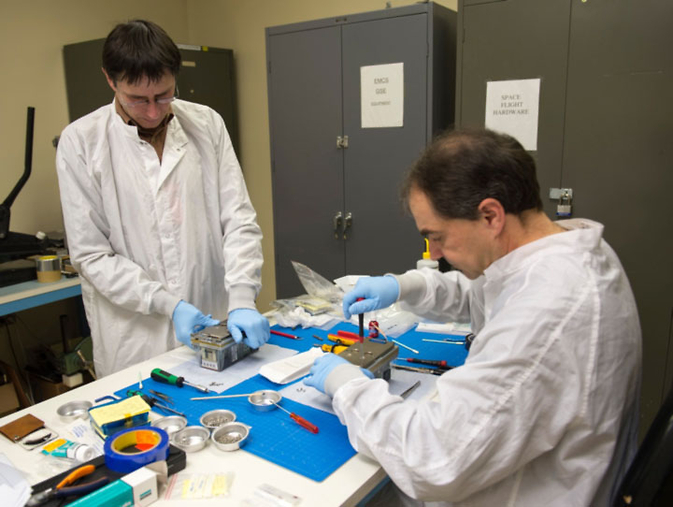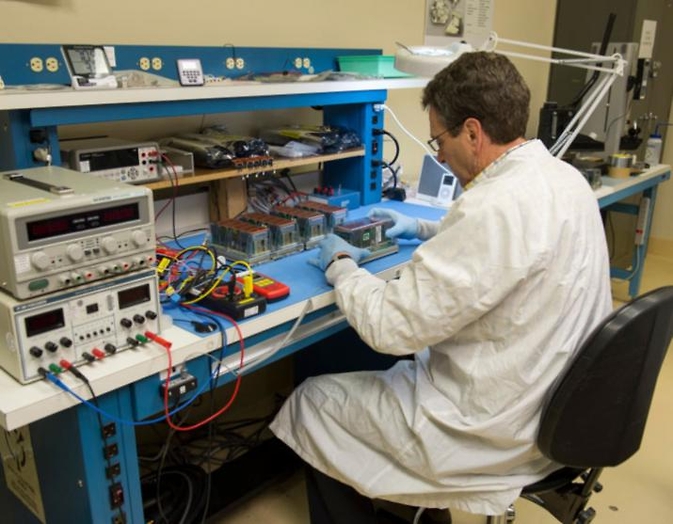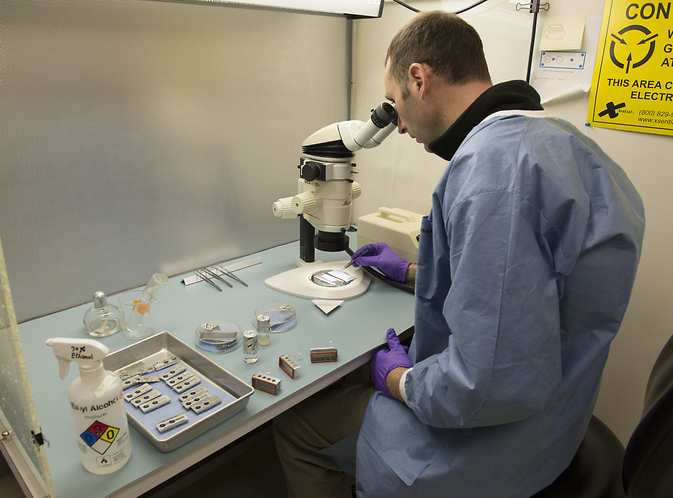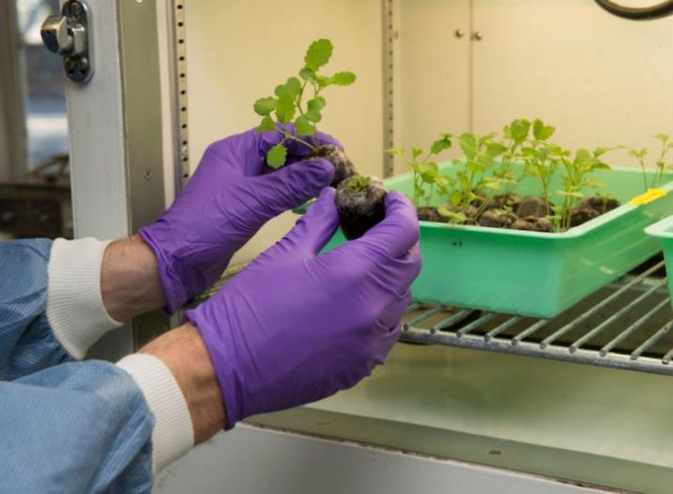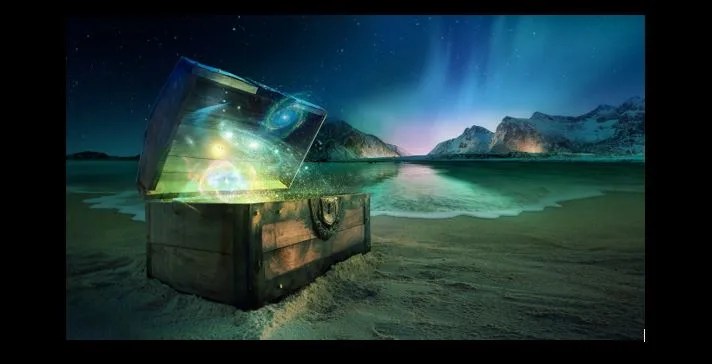Seedling Growth-1 (SpaceX-2)
Seedling Growth-1 is the first in a series of joint NASA-European Space Agency (ESA) investigations conducted aboard the International Space Station to help us better understand plant growth in space.
Learning how plants adapt to weightlessness and low-gravity environments will help researchers determine the ability of vegetation to provide a complete, sustainable, dependable and economical means for human life support in space. The ability of plants to provide a source of food and recycle carbon dioxide into breathable oxygen may prove critical for astronauts who will live in space for months at a time. As researchers continue to gain new knowledge of how plants grow and develop at a molecular level, this insight also may lead to significant advances in agriculture on Earth.
The major goals of the Seedling Growth-1 experiment are to determine how gravity and light responses influence each other in plants and to better understand the cellular signaling mechanisms involved in plant tropisms–plant movement and growth.
Overview: The Seedling Growth-1 mission is the first in a series of NASA / ESA collaborative experiments to be performed using the European Modular Cultivation System (EMCS) facility aboard the International Space Station. The Seedling Growth-1 project builds on previous investigations conducted aboard the space station with the European Modular Cultivation System using the model plant Arabidopsis, including TROPI-1, TROPI-2, and Plant Signaling.
The Seedling Growth-1 payload launched from Cape Canaveral Air Force Station aboard the SpaceX-2 Dragon vehicle on March 1, 2013.
During the Seedling Growth-1 experiment, Arabidopsis thaliana seeds germinated and grew into tiny seedlings in space. Scientists are studying study the growth of these seedlings to better understand the thresholds of gravity and light perception in plants and the relationship between red and blue light sensing in plants.
The unique seed cassette hardware used for the Seedling Growth-1 experiment was designed and built at NASA’s Ames Research Center. The NASA hardware is mounted to ESA-built experiment containers. The hardware provides air circulation, water, temperature control and light for the seeds.
For each run of the experiment, crew aboard the space station mounted the experiment containers onto a centrifuge inside the European Modular Cultivation System to test the effects of varying levels of low-gravity on plant growth. After each run of the experiment was completed, station crew packaged the seed cassettes into cold stowage bags and froze them. The seed cassettes that now contain space-germinated seedlings will return to Earth a freezer aboard the SpaceX-3 capsule for post-flight analysis. The return of the SpaceX-3 capsule is scheduled for May 2014.
The Seedling Growth series is part of a NASA / ESA Barter Agreement and supports both a NASA principal investigator, Dr. John Z. Kiss, of the University of Mississippi, and an ESA principal investigator, Dr. F. Javier Medina, of the CSIC, Madrid, Spain.
Support for this project is provided by the Space Biology Project, managed by the Space Life and Physical Sciences Research and Applications Division within the Human Exploration and Operations Mission Directorate at NASA Headquarters.
More Information:
For more information, see the Space Station Research Explorer for the Seedling Growth-1 mission.
Click to view the video Plants in Space featuring European Principal Investigator F. Javier Medina. (ESA You Tube, April 16, 2014)
Click to view the video Space Station Live: Seedling Growth. (NASA, June 5, 2013)
The Naked Scientists Question of the Week podcast entitled “How do plants grow upwards?” features comments from Seedling Growth-1 Principal Investigator Dr. John Z. Kiss. Click on the following link to listen (May 24, 2013): http://www.thenakedscientists.com/HTML/podcasts/show/20130524/
Project Scientist – Marianne Steele Ph.D., Lockheed Martin, NASA Ames Research Center
Payload Developer – NASA’s Ames Research Center
NASA Principal Investigator – Dr. John Z. Kiss, The University of Mississippi, Oxford
ESA Principal Investigator – Dr. F. Javier Medina, CSIC, Madrid, Spain





























